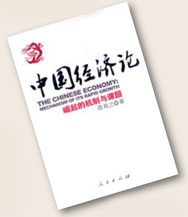Book review: Three decades of growth
This year, for sure, is the year of economists.
Amid thorny issues such as inflation, energy and food price hikes and financial bubbles, the 30th anniversary of China's economic take-off offers these intellectuals an ideal chance to look back and forward.
It is no easy task because taking stock of three decades of opening up goes beyond data collection and framing quantitative models. It requires economists to be historians as well.
Some such extremely talented people have deftly put the China miracle in the larger context of history. The first to do it was the pioneering British economist Angus Maddison, whose analysis spans a wide swathe from the beginning of the Song Dynasty in 960 to 2030.

In the book, Chinese Economic Performance in the Long Run, Maddison forecast China's per capita income will reach the 1990 level of Western Europe and Japan of around $18,000 by 2030. He even predicted the country could be reinstated as the world's biggest economy by 2015 after losing the status two centuries ago.
Chinese scholar Zhou Muzhi tackles the subject differently. In the newly published The Chinese Economy: Mechanism of Its Rapid Growth, he puts the Chinese economy's breathtaking 9.7 percent annual growth for 30 years in a global perspective.
A professor at Tokyo Keizai University, Zhou had embarked on his research way back. When he finished his doctorate dissertation 12 years ago, Zhou began to think why China, and not other countries, has become the factory of the world.
"The information era, which sped up the restructuring of the global economy, has brought tremendous opportunities for China since the 1980s," Zhou writes. "And China's internal reform has definitely released the great potential of the country However, had there been no global economic restructuring, China could not have achieved such overwhelming progress in industrialization in such a short period of time."
Zhou also has a historical perspective though his time range is shorter than Maddison's. He reviews China's ups and downs since the Ming Dynasty (1368-1644), when Zheng He undertook seven voyages, which showcased the country's organizational capability and technological might but did not lead to significant trade.
In the past three decades, industrialization and its concentration in the eastern and coastal areas have helped form Yangtze River Delta, Pearl River Delta and Beijing-Tianjin-Tangshan urban clusters, which contribute nearly half of China's economic output.
When China is still debating whether to develop mega urban clusters or small and mid-sized cities, Zhou says "mega-urban clusters should be a major solution" in his book, which was first written in Japanese.
In the long run, he wants the authorities to speed up the urban sprawl in the middle and western parts of China. "This is strategic thinking as cities will attract surplus lands in the rural regions, which can greatly improve the efficiency of the country's agricultural sector."
This is a significant policy prescription. Some Chinese farmers are reluctant to go into farming these days as their small plots do not generate the kind of cash they can earn by working as laborers in the cities. Following his ideas can reduce the income gap between rural and urban regions. "But for now, the widening wealth gap is a challenge when looking forward," Zhou writes.
(China Daily 05/14/2008 page15)














